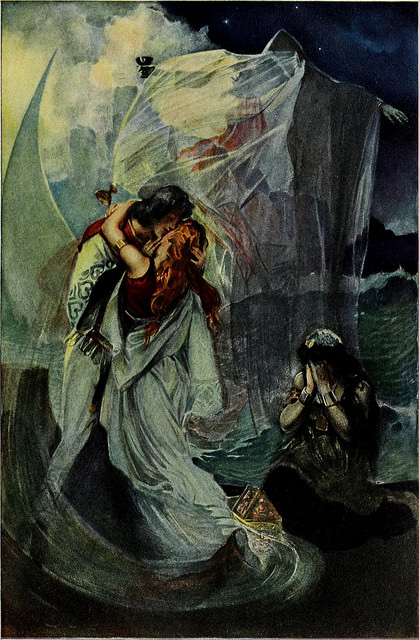| Developed by Tom Ribitzky, The Graduate Center and Baruch College, CUNY |
This assignment was designed as part of a course on the Great Works of Literature at Baruch College. This lesson appears toward the end of the course unit on the Tristan legend. Students would already have read all the assigned excerpts from Fakhraddin Gorgani’s Vis and Ramin, the original Tristan poem from medieval Persia, and they would be halfway through Gottfried von Strassburg’s Tristan. This context would be enough for them to identify and comment on recurrent motifs and thematic concerns in these two works that also emerge in the selected film clips. The documentary and the two films demonstrate the extent to which the Tristan legend has deeply impacted our cultural consciousness, from music to the visual arts. The Tristan legend offers a lens to think through how these different artistic modes inform each other and continue to inspire avant-garde innovation across the centuries.
The oer & Course Artifact
Professor Ribitzky feels that using Kanopy is a better alternative to YouTube because of the quality of the audio and visuals, and also because he has better control of the clips he shows in class. The disadvantage is the selection of films that are available Professor Ribitzky would have also to like to have included a clip from Sid & Nancy (1986), which illustrates the addiction of the Tristan lovers, and the treatment of the alternative spaces that open up in their addiction.
Kanopy (Film repository)
Professor Ribitzky’s Course Playlist: This is a playlist of film clips from the documentary Wagner & Me (2010), and the feature films Melancholia (2011) and Romeo and Juliet (1968).]
Teaching the Tristan Legend with Film Lesson Plan: Lesson plan including discussion questions, selected quotes, and in-class assignments for the Tristan Legend Video playlist [OER PDF]
transitioning to and Teaching with oer
Teaching with this OER provides pedagogical benefits by allowing the professor to show students the history of how this legend has impacted film rather than just giving a lecture. Some potential technical complications can occur if Kanopy stops carrying the desired titles, logging on through the wrong portal (for example students can use a library or school account, which changes what titles are visible), and making sure that the internet connection is stable in the classroom. Depending on when and where Professor Ribitzky logs in from, some of the videos cannot be played. However, when the correct login is used, this platform works well to provide students with a multimedia perspective on the Tristan narrative.
Faculty Information
Tom Ribitzky is a doctoral candidate in Comparative Literature at The Graduate Center (CUNY), and has been teaching Great Works at Baruch since 2014. He has also taught similar courses at City College and Macaulay Honors College and is the Program Coordinator for The Graduate Center Digital Initiatives.
License
![]()
The Teaching the Tristan Legend with Film assignment is licensed under a Creative Commons Attribution-NonCommercial 4.0 International License.
 The media linked above are available on Kanopy, which is zero cost to Baruch students but not OER or openly-licensed.
The media linked above are available on Kanopy, which is zero cost to Baruch students but not OER or openly-licensed.

